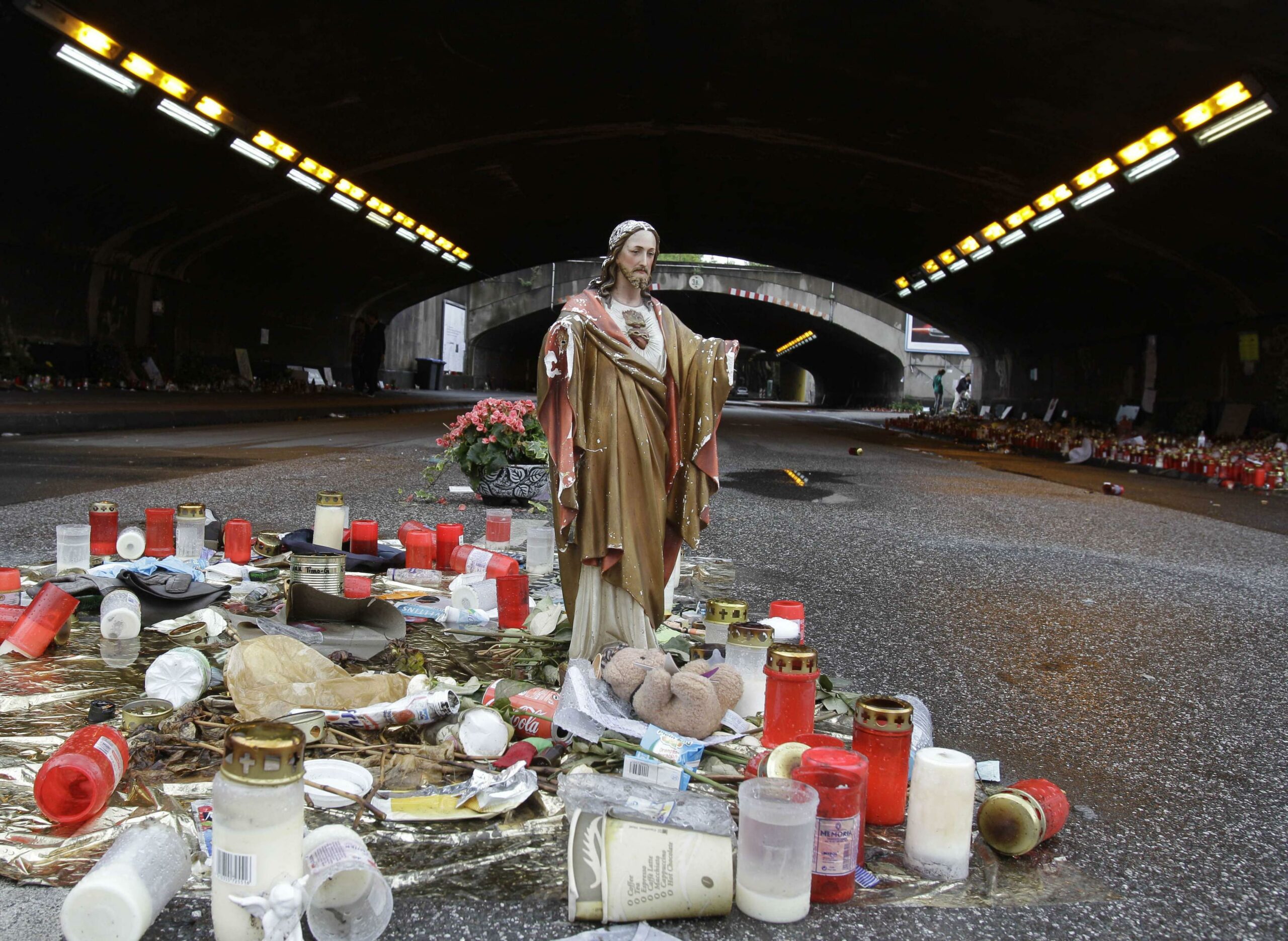Love Parade Chronology
A German court of appeals ruled that 10 individuals indicted in the Love Parade tragedy of 2010 that caused the deaths of 21 people must stand trial, overturning a lower court’s decision.

AP Photo / Frank Augstein – Love Parade Candles
Candles sit near the site where 21 people died and some 500 were injured in a stampede during the Love Parade in Duisburg, western Germany.
The first Love Parade promoted by Rainer Schaller’s Lopavent GmbH took place in 2006. Which is when Love Parade originator and German techno legend Dr. Motte, who had brought the event into being in 1989, distanced himself from the event because of the commercial spin it took. Between 2006 and 2010, the event took place at various sites in Germany’s Ruhr area, taking a hiatus in 2009 because no appropriate location to host several hundreds of thousands of visitors could be found.
In 2010, Love Parade was announced to return to Duisburg’s former freight depot, July 24, expecting more than 1 million visitors. With only one single tunnel serving as entrance, the premises were not suited to host that number of people.
At around 5 p.m. that day, the tunnel got clogged and, in the ensuing panic, 16 people died.
Five more succumbed to their injuries over the course of the following days. According to court documents, more than 650 were injured.
The office of the district attorney in Duisburg immediately seized the organizers’ documents outlining the safety concept, and later concluded the event should have never received the go-ahead.
The following year was characterized by mutual recriminations, with the promoter blaming police, Duisburg’s interior minister blaming the promoter and the city itself shunning responsibility.
German promoter legend Marek Lieberberg at the time spoke of “overwhelmed authorities and incompetent organizers.”
He told Sueddeutsche Zeitung that “this isn’t a tragic disaster, but a crime.”
Fellow promoter Folkert Koopmans said what happened in Duisburg was “sad and grossly negligent.” He told German trade magazine Musikmarkt that the tunnel entrance to the Love Parade site was 22 meters at its narrowest spot.
If people walked normally, around 60,000 revelers per hour could have been channeled through.
Extrapolating to the total number of visitors, Koopmans estimated it would have taken 20 to 25 hours to get everyone on site. In the beginning of 2011, Duisburg’s district attorney’s office said it was investigating 16 people.
It took the lawyers until late 2013 to come up with an indictment draft.
By February 2014, 10 people were indicted, four employees of Lopavent responsible for the production and safety, as well as six city employees involved in the approval procedures.

Frank Augstein/AP, file – Panic Scene
Rescue workers comfort injured visitors during the Love Parade in Duisburg, western Germany.
Lopavent boss Schaller and Duisburg’s mayor were not among them.
Investigators stated that grave mistakes had been made in the planning and approval processes. Defendants were charged with involuntary manslaughter and physical injury resulting from negligence.
However, in March 2016, Duisburg’s district court decided not to approve of the indictments and therefore rejected the opening of the main court proceedings.
This decision was overturned April 18, 2017, when the responsible court of appeals decided that the accusations were well-founded.
According to the court, the results of the investigation suggested that the defendants should have foreseen that their entrance and exit system would lead to catastrophe. A trial date has yet been set.
 Daily Pulse
Subscribe
Daily Pulse
Subscribe

